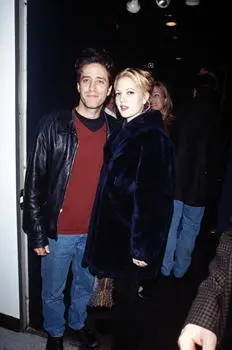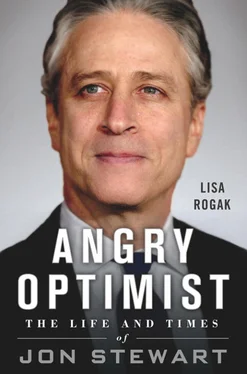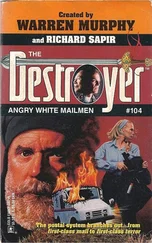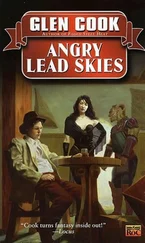Stewart first sat in for Tom Snyder in the fall of 1996, and did so well that he became a regular substitute host, filling in every three or four months, usually for a week at a time. The difference in height between the two hosts—Snyder was six four to Stewart’s five seven—provided for some memorable moments.
“The cameras [and furniture] were designed for his frame, so when I got there I looked like [Lily Tomlin’s] Edith Ann character sitting in the chair,” said Stewart. “They had to give me a booster cushion. So whenever I was working that show, I was actually sitting on a children’s pillow.”
And he sometimes acted like a kid, breaking into The Price Is Right studio with his friends after hours, where they took turns spinning the big wheel that served as the cornerstone of the game show.
Yet he felt like he could never totally relax and be himself while guest hosting. “When I was doing The Late Late Show with Tom Snyder , it was like house-sitting. So while it’s nice, because it’s a nice place to house-sit, you’re still a little worried like, ‘Oh my God, I just got ashes on the couch. Now what am I going to do?’ You don’t want to be the guy to fuck it up for when the other guy comes back and goes, ‘Who drank all my whiskey?’”
Even though it was common knowledge that Snyder wouldn’t stay on more than a few years because he wanted to retire, and some speculated that Stewart would make an ideal replacement, Stewart let it be known that it wasn’t in the cards. He was hesitant to commit to another talk show so soon after the failure of The Jon Stewart Show at Paramount.
He took advantage of being in Los Angeles to branch out in his entertainment career. And just like after all the odd jobs he held after college, Stewart figured he might as well try everything. He hit the ground running, and then some.
He signed a deal with Miramax Films with his recently launched Busboy Productions company, which he named for one of the many part-time jobs he had held through the years. The pact committed Stewart to star in at least two film projects per year and offered him the chance to write and produce as well.
And even though he said he’d never do a syndicated show again, Stewart also signed a development deal with Letterman’s Worldwide Pants company to eventually host and produce his own late-night talk show, one which would be totally on his terms where he wouldn’t have to kowtow to a large entertainment company’s executive brass.
It didn’t take long before Stewart picked up small roles in popular TV shows like The Nanny and NewsRadio, and taped a couple of live stand-up performances that were later broadcast by HBO, including Jon Stewart: Unleavened. He also appeared in a number of small parts in movies where he appeared alongside some of the biggest stars of the time.
He thought his first big break would come in the 1996 movie The First Wives Club playing opposite Goldie Hawn, but his scenes ended up being deleted from the film. He followed that up with a role opposite Drew Barrymore in the romantic comedy Wishful Thinking, which also came out in 1996. The story was told by jumping between several different points of view—including Barrymore’s and Jennifer Beals’s, the other female lead—and turned mixed and missed signals into well-trodden jokes. Stewart played a nebbishy third or fourth wheel who in the end became Beals’s love interest. To no one’s surprise, least of all Stewart’s, the film went straight to video.
Half Baked came next, where Stewart had a cameo role—billed as “Enhancement Smoker” in the end credits—of the cult stoner movie starring Dave Chappelle. The movie is about a group of pot-smoking friends who have to come up with the money to bail a buddy out of jail after he accidentally kills a diabetic police horse by feeding it junk food. Reviewers regarded it as the ultimate pothead film. Stewart followed up that role with another small part in Since You’ve Been Gone, a made-for-TV movie starring David Schwimmer about a disillusioned group of friends attending their tenth high school reunion.
Next up was the romantic comedy Playing by Heart —the original title was Dancing about Architecture— which featured a series of interlocking stories and a top-notch cast, including Sean Connery, Angelina Jolie, and Gillian Anderson. Here, Stewart’s role was a bit meatier, as he played an architect named Trent intent on courting Anderson’s man-shy character.

Jon Stewart and Drew Barrymore at the premiere of Wishful Thinking in November 1995. (Courtesy REX USA/Rex)
In all of his roles, Stewart’s lack of acting chops was evident. It wasn’t until he got the chance to play a different kind of role in the 1998 movie The Faculty, a flick about a group of high school students attempting to stave off an alien invasion, that it appeared he finally loosened up and looked like he was enjoying himself. Stewart played a biology teacher named Professor Edward Furlong who along with fellow actors Salma Hayek, Bebe Neuwirth, and Usher, of all people, is transformed into an alien after being infected with worms from space. One reviewer advised viewers to “Think of it as Invasion of the Body Snatchers enacted by the cast of Scream, an enjoyably dumb B movie.”

Stewart and actress Gillian Anderson, his co-star, in a still from the 1998 movie Playing by Heart . (Courtesy REX USA/Moviestore Collection/Rex)
Stewart’s performance in all of these movies was unremarkable, a fact that he fully recognized. “The truth is, I’m not a good actor, but it’s fun to try,” he admitted.
“I trusted these people. I was hoping that they knew what I could do, and that was okay with them. I didn’t go from being a talk-show host to being Sean Penn, I just went to being in a movie. I really felt like I didn’t mess up, but I am really proud of it because I feel that I didn’t mess up. I wasn’t the burnt kernel in the popcorn. In that sense, I felt really proud of it that I held my own in this situation.
“[A]ll you can do is show up on the set,… and hope it works out. And then you go home and write your own stuff.”
Some felt that Stewart’s background as a stand-up comedian hurt his chances at succeeding in the movies. “While it’s something that a lot of comics try to do, it’s really hard to be able to play a role when people look at you and think of you as yourself,” said Joey Bartolomeo, a senior writer at US Weekly . “If you look at someone like Jerry Seinfeld, his only role has been as Jerry Seinfeld on TV. You don’t see him in movies playing other parts.”
At the same time, Stewart credited his talk-show experience with helping his acting more than doing stand-up. “When you do stand-up, so often you’re the only person on stage and it’s all your thing,” he said. “It’s very gladiatorial. Obviously, when you’re in a scene with somebody, you’re supposed to listen and react—and that’s a bit of a transition.”
“As a stand-up comic, you don’t work with other people,” he noted. “As host, you’re hanging on to every word people say because you have to react to it.”
“It’s nerve-racking to be with people who know how to act,” he added. “Most comedians are doing themselves, ten percent angrier or happier. I like being able to do a little stand-up and do something else and also try acting. It’s that neurotic vision: the more things that I can do, the more employable I’ll be in the future.”
Читать дальше














